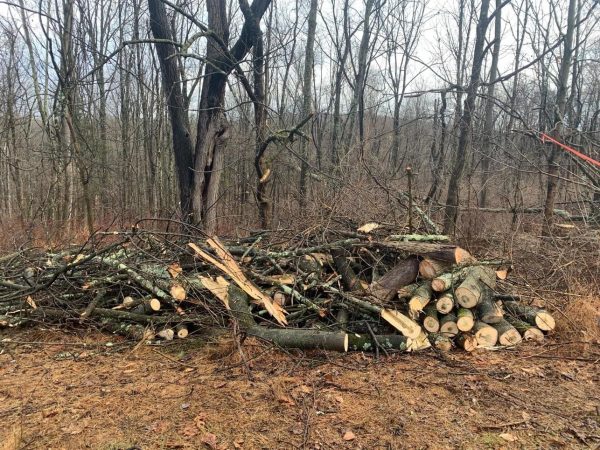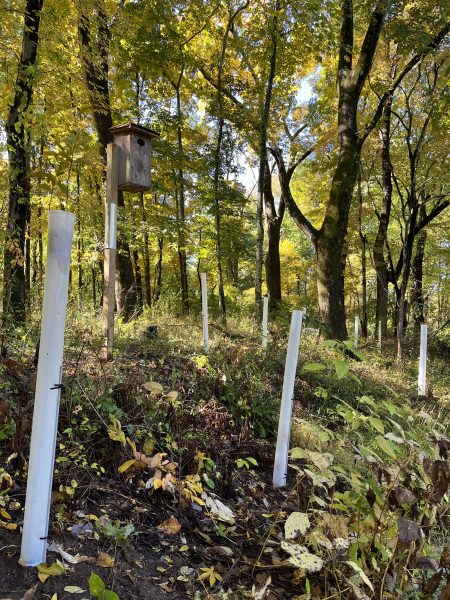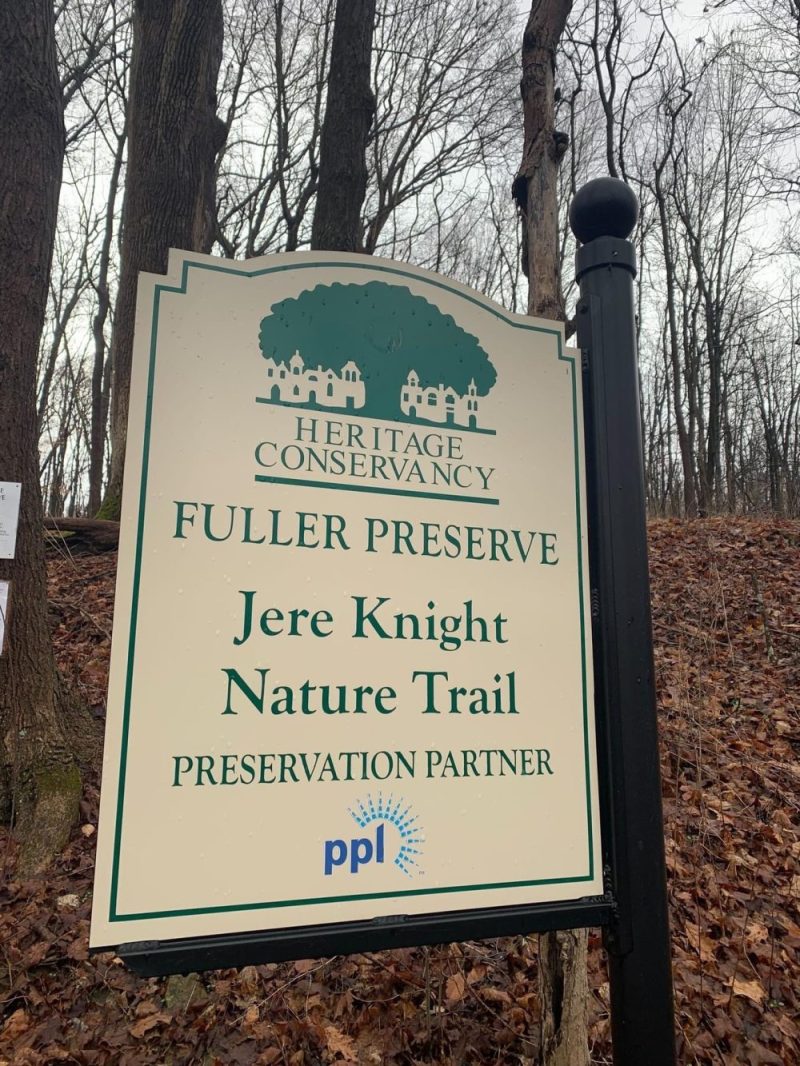As you walk around the Fuller-Pursell Preserve, you’ll notice many trees that we recently cut down.
What did we do, why did we do it, and what happens now?
The forest at Fuller-Pursell contained 3000 or more dead ash trees – victims of the emerald ash borer, an invasive insect that has killed tens of millions of trees across the Eastern United States.
Dead ash trees are known to fall or drop large limbs at any time, even without high winds, threatening serious injury or death to people walking near them. Landowners and municipalities all over our area are dealing with this challenge. At Fuller-Pursell, many hundreds of these dead trees were within striking distance of the trails.
Heritage Conservancy, which owns and manages this preserve (with the help of dedicated volunteers), preemptively cut down about 860 trees to ensure the safety of visitors and of the staff and volunteers who care for the preserve. The vast majority of these were dead ash trees. Some were other species that were also dead or diseased, or that were in the way of taking down the dead ash trees safely. We have not cut down 2000+ other dead ash trees on the preserve that do not pose a threat to people on the trails.
This isn’t the first time a change like this has happened in the forest at Fuller-Pursell, and it probably won’t be the last. A century ago, the American Chestnut, the dominant tree in many of our forests, disappeared because of chestnut blight. The forest here recovered from that shock, as it will from the loss of its ash trees.

The sight of these trees cut down may be distressing to you. We understand. You are seeing the preserve at the time of year when a change like this is most visible. When the trees leaf out this spring and the wildflowers bloom, we hope you will be able to experience the preserve differently from how you see it now. Faster than you might think, the untidy array of limbs and logs you see, which had already begun to decay before we cut them down, will be decomposed by insects, fungi, and other microorganisms.
And this is actually good for the forest! Large woody debris on the ground benefits forest health, and the downed trees will contribute to the forest ecology at Fuller-Pursell by serving as “nurse logs” to regenerate other species, offering habitat for wildlife, and cycling nutrients back into the soil. Because we are focused on the long-term health of the forest at Fuller-Pursell, felling these trees is just the first step in a larger forest restoration initiative.

To begin with, we will leave the downed trees on the forest floor to provide the services mentioned above. This spring, we will begin putting protective tubes or cages around 900+ seedlings of other species to help ensure they grow to eventually replace the missing ash in the forest canopy. We will also be planting additional seedlings to join the 1000+ trees we have planted here over the last decade.
We welcome your questions or concerns. Please contact us:
Jim Drennan, Land Conservation Manager: (215) 345-7020 x134
Tyler Kovacs, Conservation Steward: (215) 345-7020 x102
